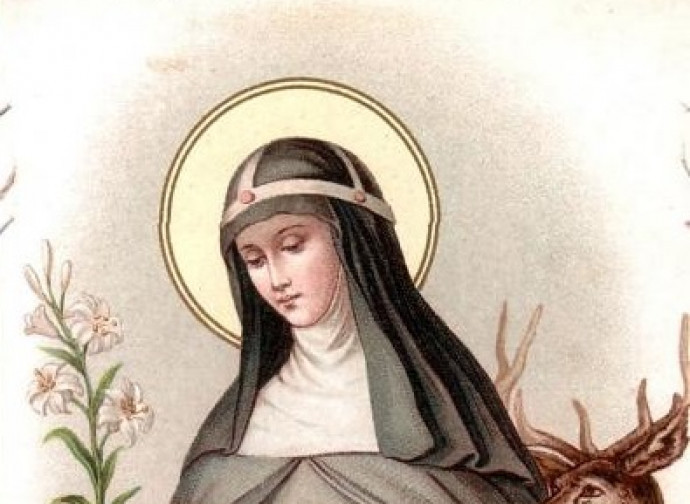Saint Catherine of Sweden
She shared the same attraction to the Christian virtues that inspired the whole of her mother’s life (Saint Bridget) and, like her, she received heavenly revelations.

Fourth of the eight children of Saint Bridget, the great Swedish mystic and co-patroness of Europe, Saint Catherine of Sweden (c. 1331-1381) shared the same attraction to the Christian virtues that inspired the whole of her mother’s life and, like her, she received heavenly revelations. Around the age of seven she was entrusted to a monastery for her education and soon developed a desire to devote herself to God's works. In obedience to her father, around the age of 13 she married the noble Edgard van Kyren, who was also inspired by a profound faith. Catherine convinced her husband to imitate her in taking a vow of virginity, and the couple supported each other, seeking Christian perfection and engaging in works of charity. In 1350, while she was with her mother in Rome on the occasion of the Jubilee, she received news of the death of her young and beloved husband.
There was no lack of aspirants for the beautiful Catherine’s hand, but she declined every marriage proposal and began to live continually with Bridget (who had been widowed six years earlier), accompanying her on numerous pilgrimages. During these they faced various dangers: it is said that they were always saved from them by supernatural interventions. Catherine spent up to four hours a day in prayer and contemplation, often meditating on the sufferings of Christ, the constant object of the devotion of Bridget herself, famous for the Orations on the Passion that Jesus taught her. Shortly after returning from a pilgrimage to the Holy Land, she assisted her mother on her deathbed in Rome on 23 July 1373. The following year, to respect her mother’s will, she brought Bridget’s body back to Sweden and buried her in the monastery of Vadstena, which had been founded by Bridget herself.
The saint favoured the consolidation of the Order of the Most Holy Saviour, whose nuns were soon called “Bridgettines” in honour of the founder. In 1375 she went back to Rome to participate in the process of canonisation of her mother (who would be proclaimed saint ten years after the death of her daughter), and three years later she obtained from Urban VI the approval of the Bridgettine Rule. In Rome she formed a great friendship with Saint Catherine of Siena and worked with her to support the legitimacy of Urban VI and the need for the Holy See to remain in Rome (a fact for which her mother had already fought, having received revelations from Our Lady in this matter). This happened in the dramatic context of the Western Schism, which began in 1378 due to the separation of some French cardinals, who had repudiated Urban VI and elected the antipope Clement VII for the Avignon papacy.
Catherine fell ill shortly after her final return to Sweden and died in 1381 in Vadstena, where she had become abbess. She wrote a work entitled Consolation of the Soul, rich in quotations from the Holy Scriptures and ancient Christian texts. She is often depicted with a female deer at her side, because it is said that the animal came to her rescue, preserving her from unchaste youths. A painting, kept in a chapel dedicated to her in Piazza Farnese, depicts a miracle traditionally attributed to her, namely the rescue of Rome from the flooding of the Tiber.
Patroness of: invoked for protection from voluntary or spontaneous abortions




